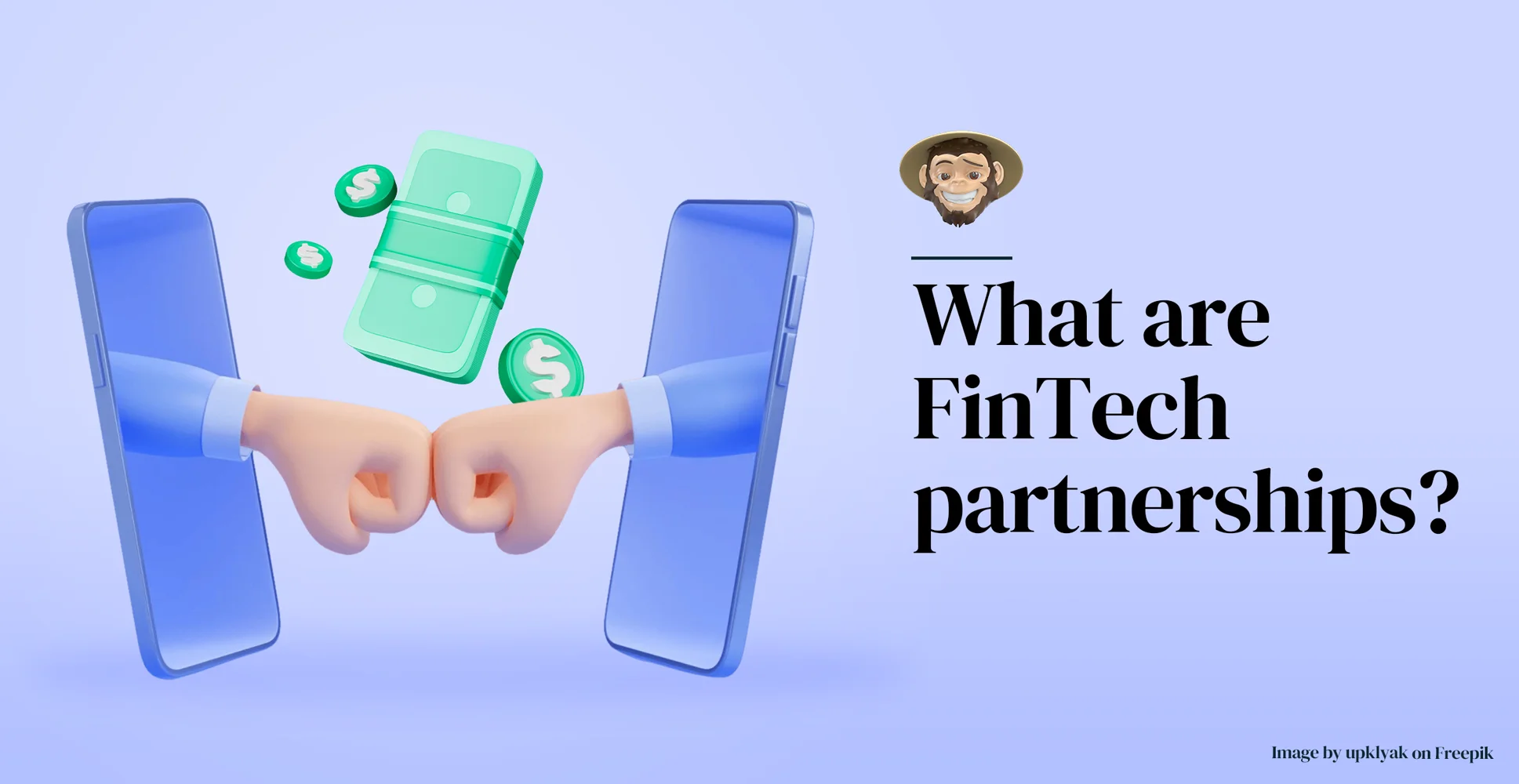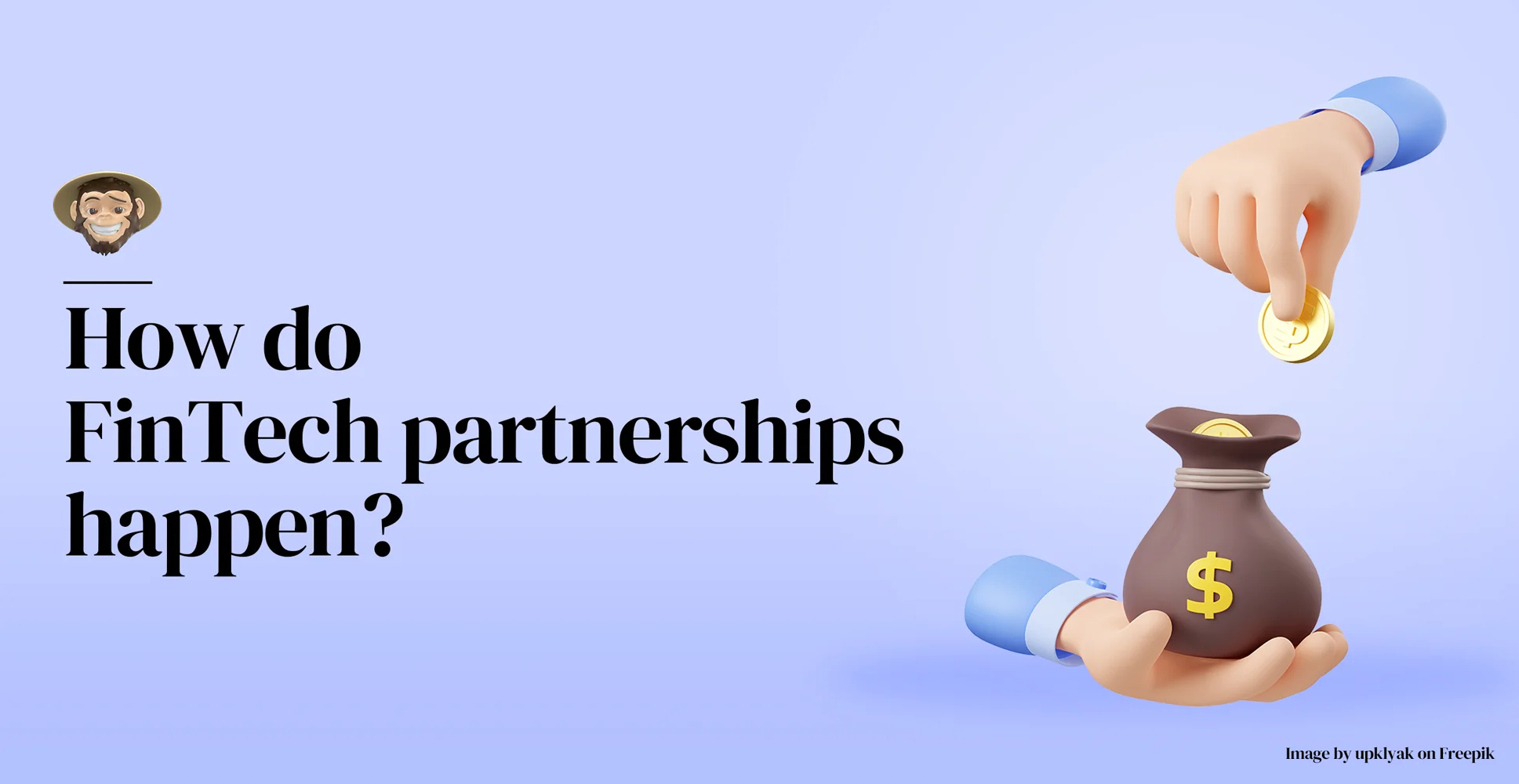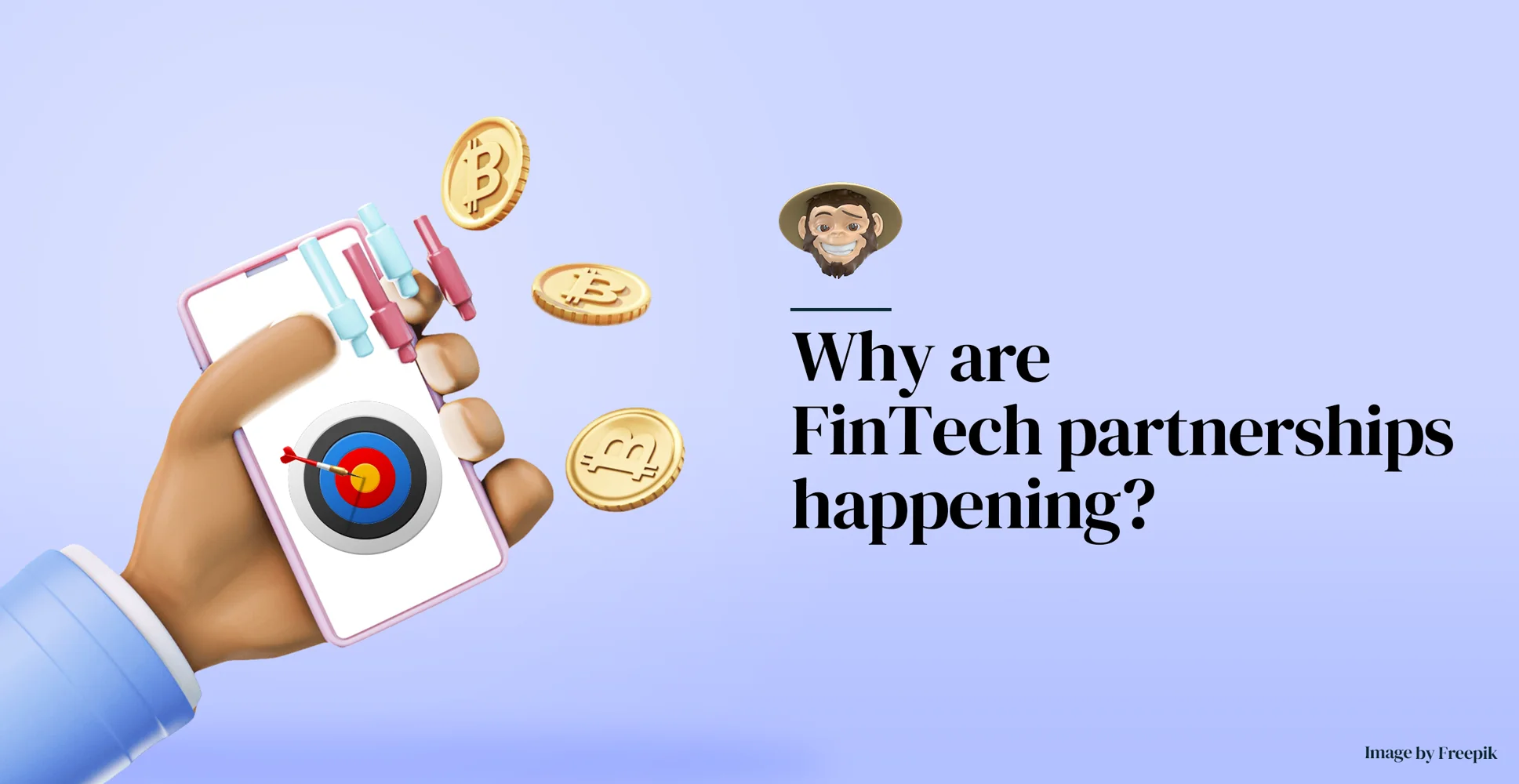After the FinTech revolution began, traditional financial institutions had to choose to enter the digital world or perish. Some decided to evolve, and modern FinTech partnerships were born.
The world of finances has always been a very dynamic environment that keeps changing thanks to innovation and the participation of big players wanting to dip their toes in the streams of cash, power, and data, something that has always happened, even back when the internet was only a dream inspired by sci-fi flicks. Today, however, after the birth of modern technologies and in the ever-evolving landscape of digital finances, a significant transformation is underway, one that is bound to redefine how we perceive, use, and interact with banking services. This “revolution” has brought with it a transformative force that has started to redefine the substance of financial services as we know them: the partnership between FinTech startups and traditional financial institutions.
It’s no secret that traditional banking is one of the industries that has experienced the most changes. It has witnessed the whirlwind of digital initiatives that completely disrupted the industry since the COVID-19 pandemic; it has had to respond to its fierce clientele who now demand digital solutions and strive hard to keep from losing its appeal. FinTechs, on the other hand, have become the new belle of the ball, which is why we find the prospect of FinTech partnerships so exciting.
On that note, let’s start digging into what this financial fusion is and what it brings and unravel the complexities and motivations that arise from the strategic alliances shaping the future of digital and traditional financial services.

What are FinTech partnerships?
The phrase “FinTech partnerships” may sound very ambiguous. Is it two or more FinTechs that got together to do stuff? It certainly sounds like it. However, when we mention FinTech partnerships, we refer to a collaborative agreement that takes place between one or more FinTech startups and one or more traditional financial institutions or other businesses that operate within the banking industry. In other words, and for clarification purposes, for a partnership to be considered to be a FinTech partnership, it must involve the integration or development of financial technology solutions in collaboration with traditional banks or other stakeholders within the financial sector. Furthermore, FinTech partnerships aim to leverage the undeniable strengths of financial technology with the power and solidity of traditional banking companies in search of enhancing the delivery, reach, and accessibility of all financial services, injecting innovation into the sector and help both parties remain competitive in the rapidly evolving digital landscape.
Although FinTech partnerships are relatively new, the number of alliances between banks and financial technology companies increased between 2019 and 2021. For 2019, there were around 1.3 partnerships per institution between banks and FinTechs, while 2021 gave us 2.5 partnerships per institution, which is almost double in only two years. So, we can say that the synergy between FinTech startups and traditional financial institutions is solidifying, and rising collaborations between these two seemingly disparate entities stopped being merely a trend and are now becoming fundamental for the banking industry to shift towards becoming more digital, user-friendly and ultimately, take the plunge into the future.

How do FinTech partnerships happen?
Just as there are different types of financial institutions and financial technology companies, FinTech partnerships can take various forms; there’s no one-size-fits-all way of making a FinTech partnership. Each type of collaboration happens differently and caters to a specific market and specific users with particular needs while also aiming to meet the objectives and plans of the collaborating entities.
Here are some of the primary ways FinTech partnerships can take place that we consider to be prevalent in the industry.
Investments/acquisitions: Financial institutions typically choose to either invest in FinTech startups or purchase them. In the first scenario, they stand to gain access to the innovative technologies and services that often power FinTechs and leverage some of them to fuel part of their own digital initiatives. If they choose to go with an outright acquisition (white-labeling), they can integrate the technology, talent, and services directly into their portfolio under the bank’s name and without using the FinTech’s name and brand if they choose not to.
Simple collaborations: FinTech startups can collaborate with banks to provide them with specific technologies, such as payment gateways and APIs, to enhance their services in exchange for publicity, a wider reach, or access to a broader, established client base.
Joint ventures: In a collaborative venture partnership, two or more companies unite to create a new company or launch a product. In this scenario, larger financial companies or banks often partner with smaller but more tech-savvy FinTech companies to leverage their innovative technologies.
BaaS partnership: A Banking-as-a-Service Fintech partnership allows a FinTech startup to interact directly with its users by providing services using the bank’s infrastructure. It combines FinTech’s innovative technologies with the bank’s established infrastructure to help grow its user base, increase revenue streams, and enhance both party’s service portfolios.
Blockchain and cryptocurrency collaborations: Nowadays, where blockchain and cryptocurrencies are becoming non-negotiable in the digital bank space, traditional financial institutions can partner with FinTechs, cryptocurrency exchanges, or digital wallets to leverage technologies that allow users to buy, sell, and store digital currencies.
These types of FinTech partnerships, and many more we may not have listed here, not only highlight the diverse ways FinTech startups and traditional financial institutions can collaborate but also make strides to create innovative banking solutions, enhance the user experience of financial products, and help traditional financial institutions remain competitive in the rapidly evolving online financial landscape.
But what are the actual reasons behind FinTech partnerships forming?

Why are FinTech partnerships happening?
There are several reasons why these collaborations are happening, and we must understand them. Here are the main ones.
Innovation
The most prevalent reason why FinTech partnerships are forming is innovation. As you may already know, FinTechs are known for their lack of legacy systems, which is one of the reasons behind their innovative ideas, tech-driven strategies, and overall agility. The disparity between these outdated legacy systems that have traditionally powered most traditional financial institutions and the modern AI and API-based systems FinTech startups use is astounding. FinTech startups often operate on highly modern, cutting-edge infrastructure and software that developers can typically implement, maintain, and update very swiftly. Furthermore, they have the ability to develop and implement new technologies much faster than most traditional financial institutions, making FinTech products highly innovative, user-friendly, and disruptive. As a result, partnering with FinTech startups only makes sense for traditional banks and other stakeholders, doesn’t it?
FinTech partnerships allow traditional financial institutions to access the technology, innovation, and flexibility inherent to FinTech companies and their products without having to build any of it in-house, which helps them save costs, time, and resources while still enjoying the perks of what FinTech undeniably brings to the table in terms of cutting-edge tech and innovation.
Improved user experience
It’s no secret that traditional banking and financial transactions are a hassle. From dealing with bank tellers to credit card companies, most of us try to avoid bureaucratic, drawn-out banking processes whenever possible. Even a simple money transfer requires commuting to a bank branch, standing in line, and filling out paperwork, and is overall not a very user-friendly experience. Online transactions via FinTech solutions, on the contrary, are typically straightforward, highly intuitive, and fast. They often focus on improving the customer experience by leveraging cutting-edge technologies that place the entire realm of financial transactions at the users’ fingertips.
Unlike traditional banking, FinTech users have access to a wide range of financial services 24/7, from anywhere in the world, as long as they have an internet connection. So, by establishing FinTech partnerships, traditional banks can enhance their user experience and allow their customers to make deposits instantly and payments, check their balances, and perform all sorts of transactions without stepping a foot outside or being tied to a branch’s hours.
Access to a more extensive user base
So far, it seems FinTechs are the ones leading the way in terms of why FinTech partnerships take place. However, while traditional financial institutions may lack the technology, innovation, and flexibility of FinTech startups, they do have several competitive advantages that make them strong business allies. One of these advantages is their robust and broad user base.
Traditional financial companies and banks are typically long-established institutions with proven track records that are trusted by millions and have a reputation that precedes most FinTechs by decades. Most banks also have strong brand recognition and a deep-rooted market presence, which instills a sense of trust and attracts a wide range of customers. So, by partnering up with traditional financial institutions, FinTech startups have access to an established, loyal user base and can reap the benefits of showcasing their products to them without additional efforts, investments, or having to start building an audience from scratch.
Banks, on their part, stand to gain access to the niche markets and specific demographics that FinTechs often work with and that traditional financial institutions typically struggle to reach. This is a great way for banks to instantly expand their customer base and even grow their portfolio by offering specialized services that target these new users’ needs.
Regulatory compliance
In the financial industry, regulatory compliance is non-negotiable but these standards and rules are often complicated to understand let alone navigate for FinTechs, especially for startups. Traditional banks generally have a deeper understanding and experience with regulatory compliance compared to many FinTech companies. Most of them have been operating for decades and not only have historical knowledge of how financial regulations have evolved over time but have also accumulated substantial experience in navigating the current complex regulatory landscape. Moreover, most banks have established long-term friendly relationships with the government entities and regulatory bodies incharge of enforcing those regulations, meaning they’re in tune with the latest changes and can respond and pivot quickly. So, FinTechs that partner up with traditional financial institutions can stand to gain significant edge in the regulatory compliance front.
Its worth noting, however, that we’re not saying that FinTech startups can’t navigate regulatory compliance. Many FinTech companies are extremely nimble at understanding and meeting these standards. What we’re saying is that long-established financial institutions have been around for longer so they’ve accumulated more experience in that front. Either way, collaboration between both will result in knowledge shared, benefiting both parties and, ultimately, the users they serve.

What are some popular FinTech partnerships?
So, now that you know why and how FinTech partnerships happen, do you remember seeing one? Maybe a banking app you used involved one. Or maybe you’ve seen them and don’t even know it. Anyway, here are some specific examples of popular FinTech partnerships between traditional financial institutions and FinTech companies.
Citi and IntraFi: Last year, Citi partnered up with IntraFi, a FinTech company that provides innovative banking solutions for financial institutions, to develop an innovative US deposit sweep solution called the IntraFi Yankee Sweep. This solution allowed institutional clients to transfer cash into deposit accounts at non-US banks across the United States.
Revolut and Cross River Bank: Cross River Bank and British-Lithuanian neobank Revolut joined forces last year to help Revolut US-based users access more affordable forms of credit. Revolut will leverage Cross River Bank’s banking infrastructure to offer these credits, overcome regulatory hurdles, and provide a wider array of financial services to their users.
Stripe and Goldman Sachs: These two behemoths joined forces to provide financial products and other services for businesses. This FinTech partnership allows Stripe to leverage Goldman Sachs’ solid, long-standing banking infrastructure to tailor services for businesses that are already operating on Stripe’s platform.
American Express and Kabbage: American Express and Kabbage, an online lending platform, formed a strategic alliance to offer small business loans to American Express business cardholders. Later on, American Express ended up acquiring Kabbage and renaming the app “American Express Business Blueprint”.

Closing argument
Decades ago, traditional banking was the norm. Physical bank branches were the only gateway to access financial services, and that was okay; most banks were very good at what they did. But now, in the digital age, where innovation propels progress, consumers need more, which is the reason why FinTech partnerships are becoming a focal point of discussion. Traditional financial institutions aren’t likely to disappear anytime soon, but FinTechs are certainly giving them a run for their money. So, instead of entering an unwinnable race, both parties joined forces, and now, FinTech partnerships are bridging gaps, improving the user experience, unlocking new markets, and helping the digital banking ecosystem evolve and become more efficient, accessible, and tailored to the diverse needs of the modern user.
We at Foonkie Monkey have ample experience in building FinTech apps that propel innovation in the financial world forward. So, if you want us to make your FinTech app a reality, please contact us! We’d love to help!
